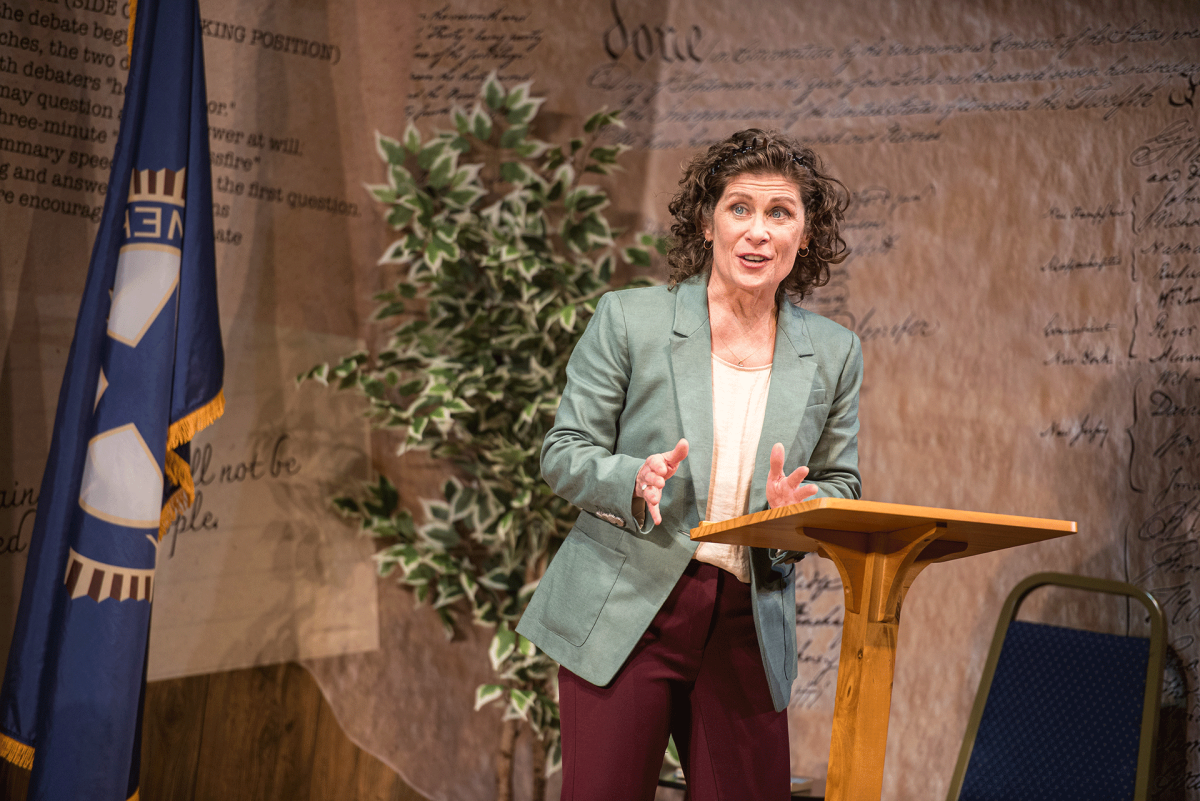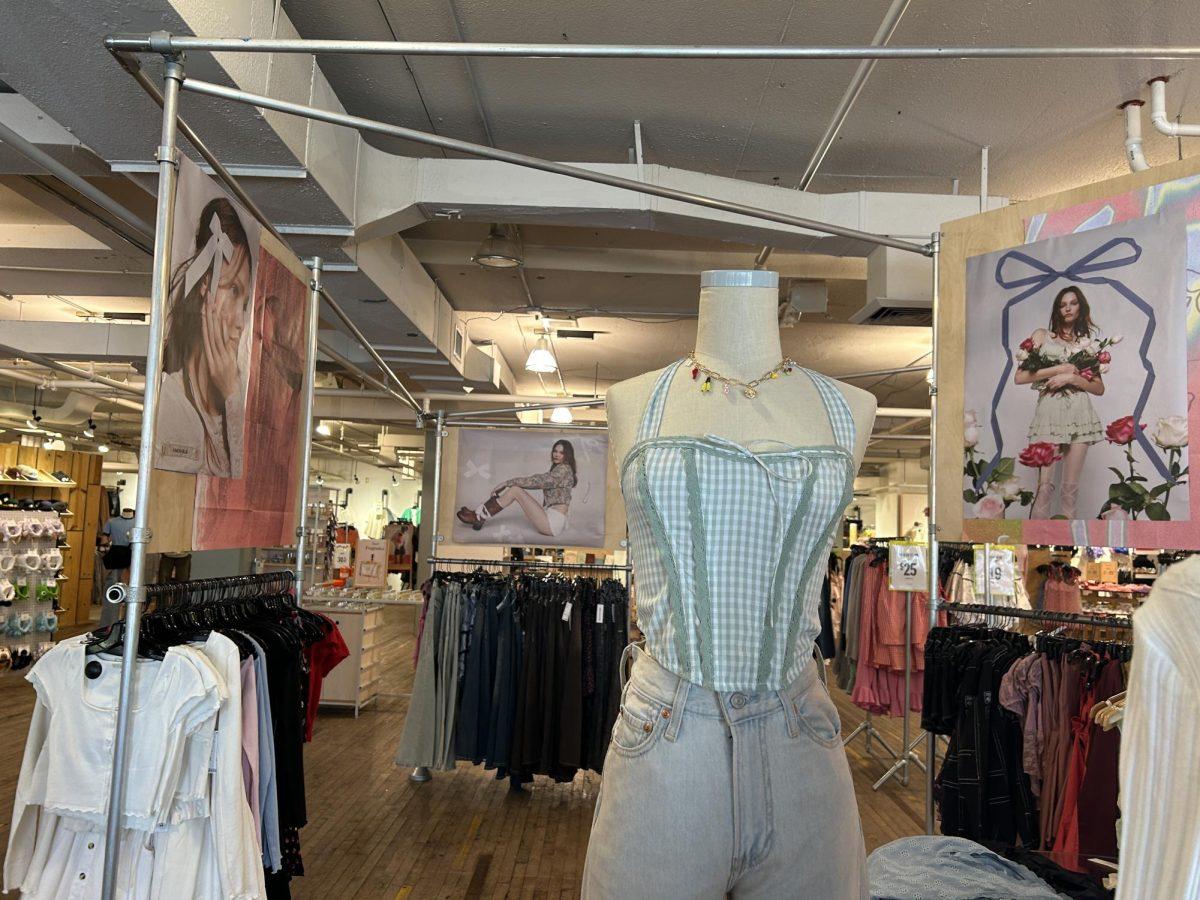
Artist and tenured University of Wisconsin faculty member Jennifer Angus is celebrating the release of her debut novel, “In Search of Goliathus Hercules.” The book is an adventurous tale of a boy on a fantastic journey into a strange world of insects. Although written for a young adult audience, this page-turner is fun for adult readers as well. Moments of the story will have readers drawing correlations to Franz Kafka’s “Metamorphosis.”
The protagonist, Henri Bell, comes to realize he possesses an unusual talent; he has the ability to speak to insects. With the help of his new-found friends, and a few human ones too, Henri sets out on a grand expedition in search of his missing father. Angus takes the reader to faraway lands like the Malayan city Kuala Lumpur. While in the thick of the British Malayan jungle, Henri hopes to discover the elusive Goliathus hercules beetle, one of the largest insects on the planet. However, he and his friends must beware as they are not alone on this trek: There is an ominous character in their midst risking their success and survival. The course of the 350-page book is transformative, if not literally in the context of the characters, then certainly in the way the reader gains a better appreciation for the friends among us in the insect world.
So where does this illustrative sense of imagination stem from?
Following suit of the fearless character in her book, the Canadian artist is well-traveled. It was in Thailand, where she lived for a number of years, that she was able to observe and develop an appreciation for the insect kingdom. While living there, she was introduced to a traditional garment called a “singing shawl” worn by young women of the Pwo Karen tribe. The shawl incorporates reflective beetle shells for elaborate decoration. It was this natural beauty and accessibility of material that sparked the beginning of her inclusion of insects in her own artwork.
Angus is often asked if the bugs are real. The answer is yes, and the color and patterns, many of which are very intricate with intense hues, are unaltered. Each insect is handled with care. Following traditional entomological methods, Angus’ only manipulation of the insect specimen occurs initially when posing and pinning the insects. Afterward, they remain dried and fixed in that position.
For more than a decade, Angus has been on her own adventure installing her art exhibits in museums and galleries. Her work is recognized for its intricacy and labor-intensive installation process, but even more so for the medium used. Angus installs hundreds to thousands of dried, preserved insects directly into the walls. She works with over three dozen varieties of species, ranging from the Eurycantha calcarata (Thorny Stick) and Attacus atlas (Atlas Moth), to the more familiar cicada.
Angus designs each installation specific to the location. Some insects are ornately arranged in patterns suggesting a traditional Victorian-era wallpaper, while others resemble a fun landscape with giant flowers reaching towards the sky. Bright oranges and pinks, pale purples and greens and occasional reflective metallic hues of an electric blue or sparkling silver from the great quantities of insects fill the room and inspire a magical awe in the viewer. The moment viewers step in for a closer look, they might instinctively take a jolt back, realizing they are in a room full from floor to ceiling with six-legged creatures.
When asked if she had a favorite insect she said, “It changes from time to time, but the katydids are fun because, with their wings spread, it looks like they are wearing a fancy ball gown.”
Angus doesn’t limit herself to only creating insect arrangements on wall surfaces. Some of her work consists of miniature house displays, curio cabinets and cast beeswax sculptures that are sometimes contained within bell jars or framed wall hangings. In some installations, she incorporates handprinted wallpapers or even creates her own insects by combining parts that had previously broken off. Every element of space and nuance of an arrangement is taken into consideration. Ultimately, if a particular insect doesn’t have the right wingspan to fit the spot, Angus will find the one that fits.
Because it is common for Angus’ work to be on exhibit in more than one location at a time, she keeps a well-stocked inventory of roughly 20,000 insects in her collection. The origin of her stock comes from specimen dealers from around the world. These insects are often farmed, but none of the species used are endangered.
Each show may look different, but the underlying message remains the same: to bring awareness to insects and their integral function on this planet. There is a sense of wonder in the nature shown to the viewer, and this is another message of Angus’ work. It is easy to let the imagination go and be reminded of that other world right below our toes.
If crawling, hopping, flying things tend to make your skin crawl, consider giving them a second chance. Check out one of Angus’ art installations or pick up her new book for a curious read with an unordinary perspective.














